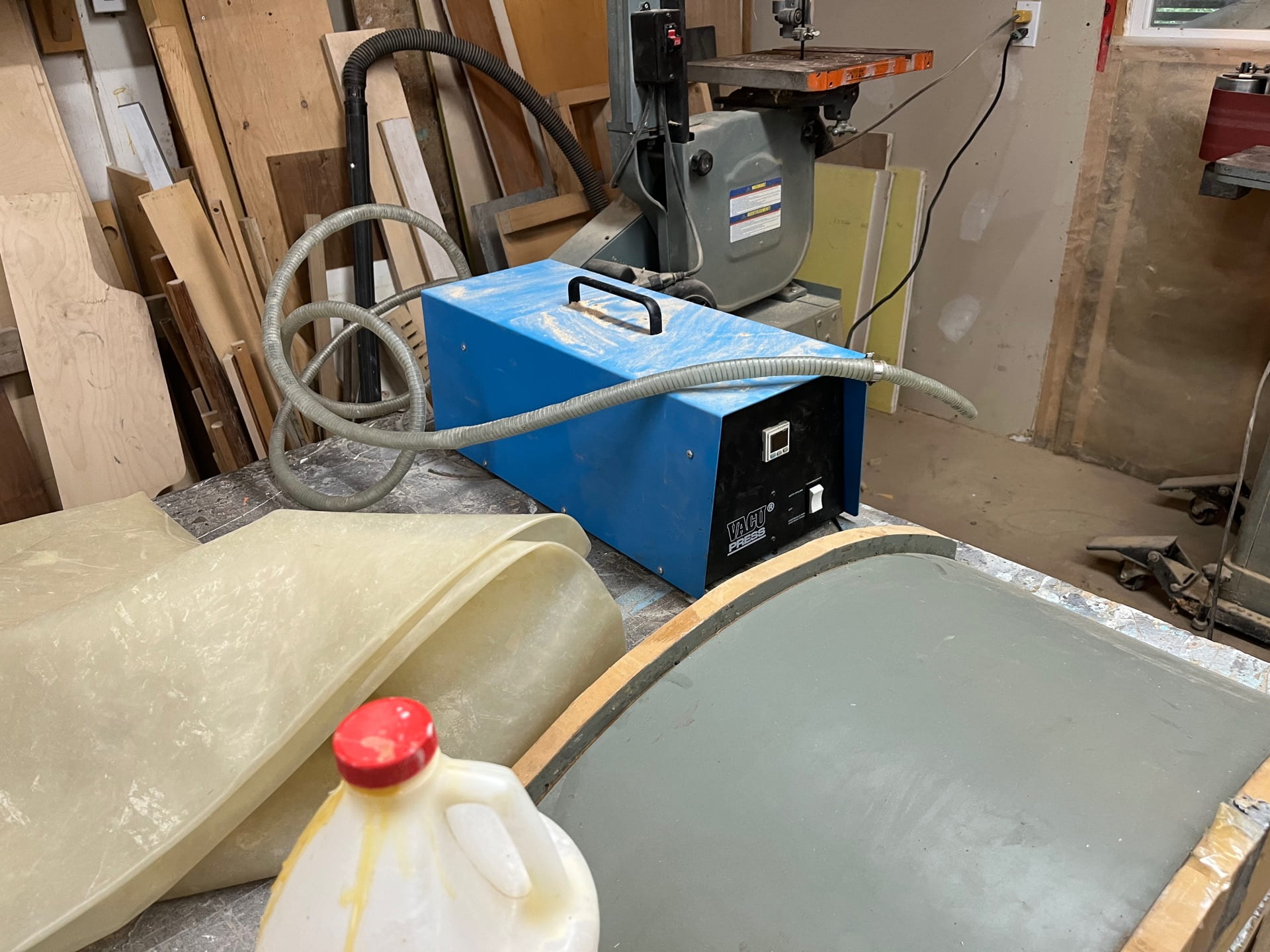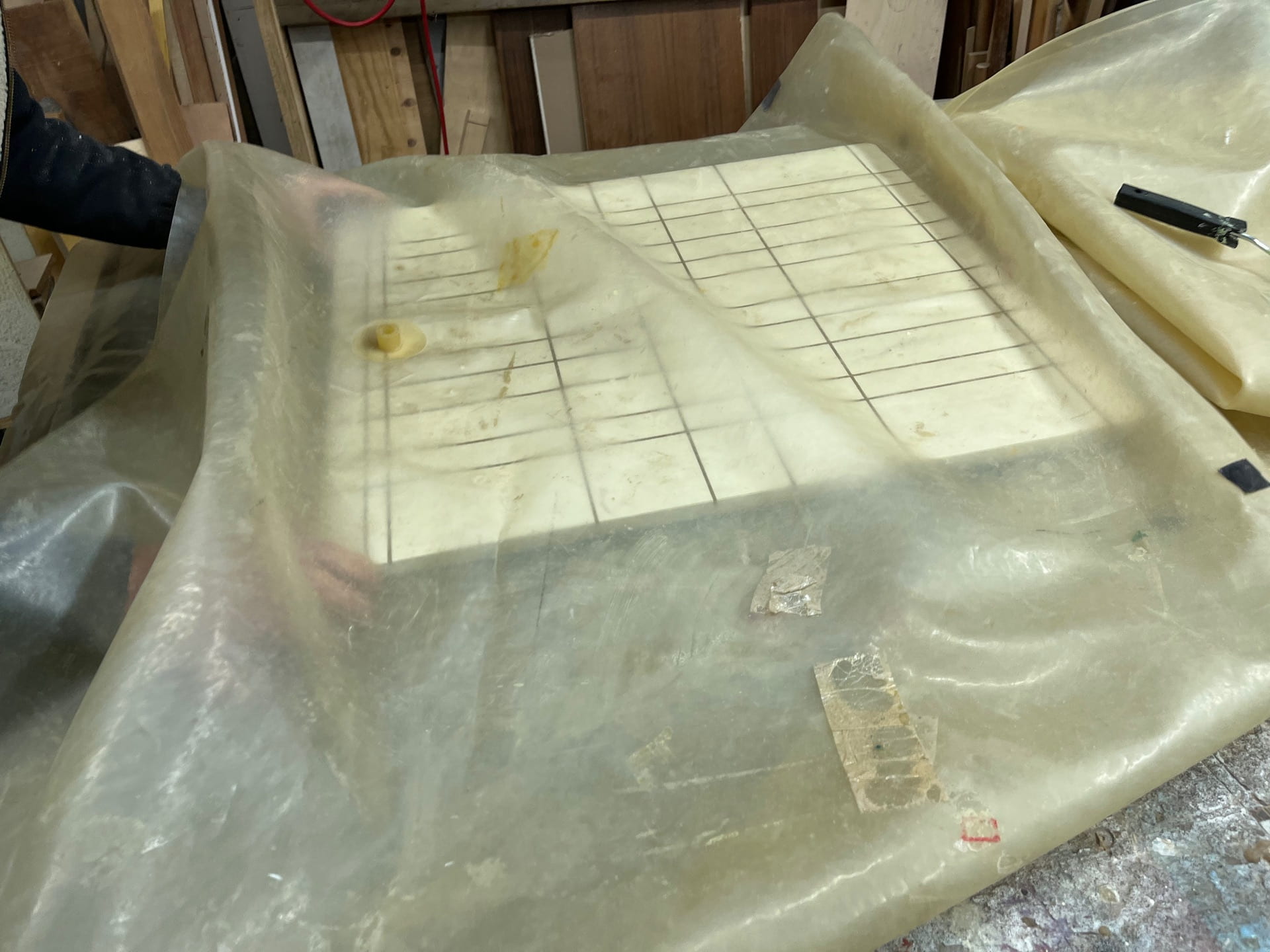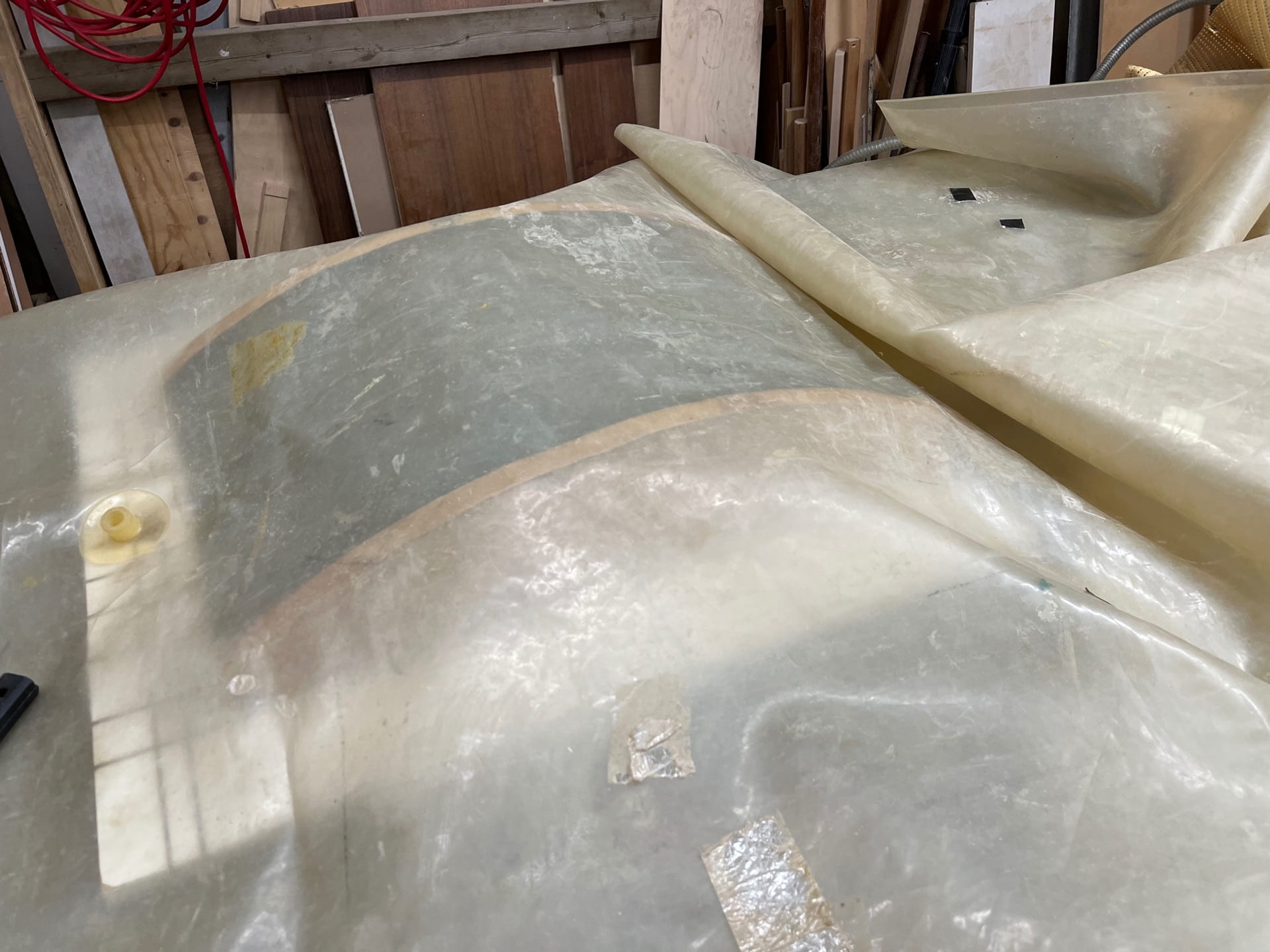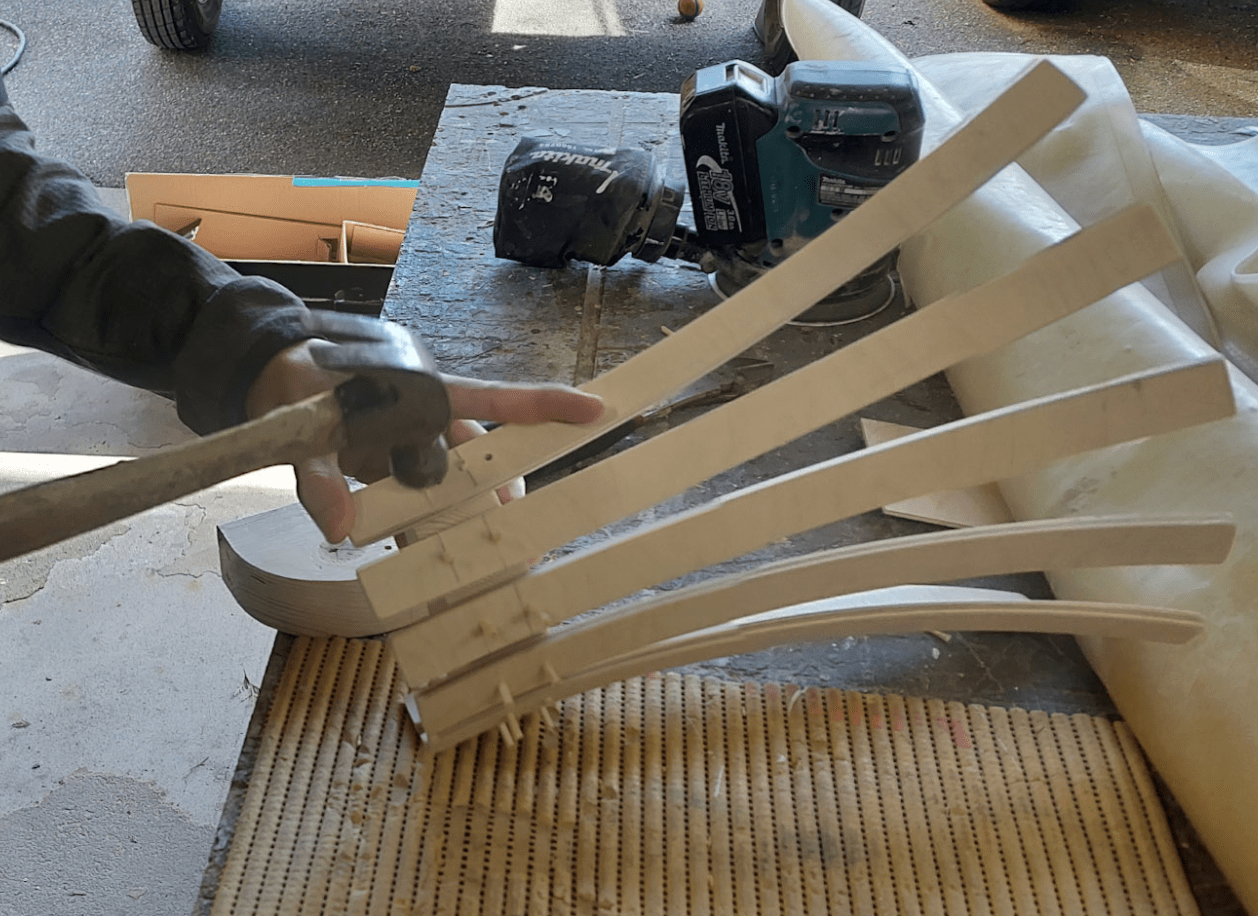Ahoy! Welcome aboard my 5th blog post on my woodworking In-Depth progression! During the past two weeks, I was able to meet and work with my mentor, and through doing so, experienced and exercise a lot of new skills and techniques in the woodworking process.
The design process for most creative work, including woodworking, includes careful planning and idea-generating. However, the most important part of the design process remains the prototyping and redesigning of the raw ideas into a more realistic product. Prototyping is important because it reveals a lot of flaws and potentials in a design to the designer that couldn’t be seen from a computer drawing or imagined. This is exactly what we did this week, as I brought my computer model to my mentor during our first session and immediately got to work on the prototype.
First, he explained how we were going to construct this prototype and the final product. Since my design had so many curves in it, bentwood lamination would be the most efficient way of creating the pieces for my birdhouse. Bentwood lamination is putting wood into a vacuum bag where it will cure against a mold of a curve. This process has a few components involved, such as the wood, the glue, the mold, and the vacuum. We first searched for a piece of material wood, and we were easily able to find a scrap piece of plywood that fit our size specifications. Secondly, we looked for materials to make the mold, however, while looking for materials to make the mold, we found a mold for a previous project that fit perfectly our needs. This shows how resourcefulness can be a very useful part of woodworking to minimize wasted materials. Next, we glued two planks of plywood together and set up the vacuum bag. We placed the plywood material on the top of the mold and started the vacuum process. The wood was then left to cure for 6 hours and released from the vacuum and held its bent shape.

Vacuum Press and Vacuum Press Bag

Vacuum press bag and inserting part of the mold

Mold inserted into the vacuum bag

Bentwood Plywood Material Vacuumed in bag

Bent Wood Polywood Lamination out of vacuum and after curing (it maintains the mold’s shape)

Sliced main piece into smaller segments creating the beams for the birdhouse

Belt sander used for sanding and finishing

Hammering in the Dowels to secure the joinery
In our next meeting, I was able to see the cured piece of plywood that had a beautiful bent shape to it. We proceeded to slice the large sheet into smaller beams that would be used for the support beams of the birdhouse. We used a table saw to slice the plywood into beams and a belt sander to finish off the rough edges. Next, we thought about the joinery situation and ended up going with another solution, different from the one we planned on the computer because it was more efficient and effective. It was a hexagonal shape that allowed the beams to attach to the side of it. This worked very well and was created from a piece of wood shaped on a band saw. This piece was also finished off on the belt sander. After this, we drilled holes into the joinery piece and at the end of the beams for joinery. We used bamboo skewers to join the two pieces together by hammering them in. The fit was quite tight but on the final product, it would be glued as well. This wrapped up our progress, I found this prototyping experience to be much faster and more effective at finding flaws in a design and finding new potentials for solving the problems we encountered.
- This time, my mentor exposed me to a new way of the design process which was prototyping. He led me through how to prototype, things we discover during prototyping, and how we can use prototyping to improve the final product. He also gave me opportunities to use his equipment and his expertise in woodworking. This opened many new ways of designing and allowed me to think of not only the ideas of design but also how they can be realized and physically created. Taking consideration of how products would be made allowed me to be more aware during the design process as well.
- Having my mentor by me created an opportunity for me to reinforce new learning. When I am learning something new, such as how to use a machine, he was able to supervise me and stop me before I make any dangerous mistakes. This was very useful as many of the mistakes are hard to predict and can be very easily caused. He also suggested precautions that I could take
- The technical skills such as how to use a belt sander safely, how to use saws safely, etc. created the opportunity for me to experiment with so many other ideas and think in new creative ways. For example, because I was exposed to the band saw and the band sander, I generated the idea for the joinery piece because I knew it would be time-efficient to make the tools accessible and effective in working order.
- When we get together, we usually talk about woodworking… But in all seriousness, we first discuss what we may work on this particular day, as there are many things that can be done at the same time and interchangeably. Next, we communicate throughout the session to ask questions, answer questions, discuss problems we face, and suggest new solutions.
- Currently, I think our mentorship has been going very well because we are able to get along very well and work very effectively and cooperatively. There is little to no trouble in communication. We can get ideas through and can freely suggest suggestions kindly leading to solutions very fast. Furthermore, we are also able to just put our heads down and work. My mentor has been very competent in making sure I get the full experience and allows me to get involved in the creation process.
- I have learned that my mentor likes to break the rules from time to time, not in a dangerous way. I like this because I tend to do the same during design as well. We design things knowing beforehand that we most likely will change them later and leave enough space for error instead of solidifying on one vision. I’ve also learned that he likes to improvise and learn through the making process, and this is something I am developing too throughout this experience.